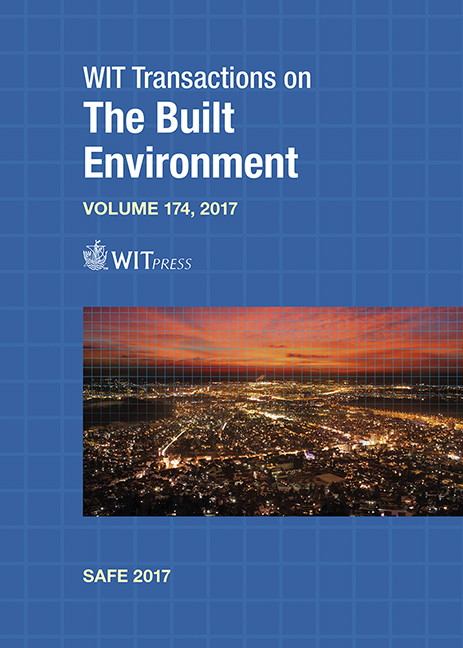FIRE DESIGN IN SAFETY ENGINEERING: LIKELY FIRE CURVE FOR PEOPLE’S SAFETY
Price
Free (open access)
Transaction
Volume
174
Pages
12
Page Range
119 - 130
Published
2018
Size
522 kb
Paper DOI
10.2495/SAFE170111
Copyright
WIT Press
Author(s)
MARA LOMBARDI, GIULIANO ROSSI, NICOLÒ SCIARRETTA, LUCA GROSSI, NINO ORANGES
Abstract
The present study analyses fire design settings according to Fire Safety Engineering (FSE) for the simulation of fire in civil activities and compares these simulations developed using natural and analytic fire curves. The simulated Heat Rate Release (HRR) curve, appropriately linearized, allows for the estimation of a Likely Fire Curve (LFC). The analytic curves have been introduced for the purpose of evaluating the strength and integrity of the structure, and the adoption of these curves in the fire safety engineering was made following the assumption that the phenomena of major intensity ensure the safe approach of fire design. This argument describes the method adopted for determining a likely fire model that guarantees a greater adherence of the virtualized phenomenon with respect to the potential event. The study showed that the analytic curve, adopted in order to verify the structural strength, in the beginning phases of fire produces fields of temperature and toxic concentrations lower than those obtained by simulation of the Likely Fire Curve. The assumption of the Likely Fire Curve model safeguards exposed people during self-rescue and emergency procedure. The programs used since 2011 for the simulation are FDS (Fire Dynamic Simulator v. 5.4.3) and Smokeview (5.4.8). Comparative analysis was developed using thermo-fluid dynamic parameters (temperature and heat release rate) relevant to the safety of the exposed persons; the case study focuses on children and employees of the nursery. The main result shows that the safety criterion, implicitly included in the analytical fire curves - normally used for fire resistance - doesn’t have the same applicability of a performance based approach on safety evaluation involving people. This paper shows that the Likely Fire Curve assumption involves a thermo-chemical stress more relevant to assessing the safety of exposed people.
Keywords
Analytic Fire Curve (AFC), Fire Safety Engineering (FSE), Likely Fire Curve (LFC), nursery safety





